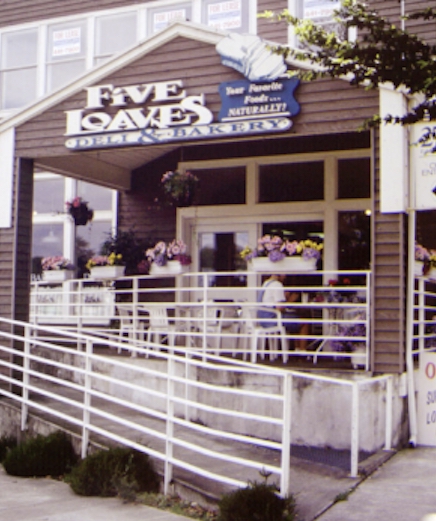Merging Medicine and Ministry for Transformational Evangelism
In the early 1990s, Pastor Jim Brackett and his wife Neva embarked on a bold and innovative initiative that would bridge the gap between physical healing and spiritual restoration. Their Project RESTORE (Reaching Seattle for Eternity) in Seattle became a model of how medicine and ministry could work together to bring holistic transformation to individuals and communities. Over a remarkable 12 years, this program reinvigorated a struggling church, equipped a new generation of gospel workers, and baptized dozens into the faith.
A Vision Takes Root
Jim Brackett was no stranger to evangelistic work. As a full-time evangelist with Amazing Facts, he had long dreamed of a program that combined health education with the gospel. The opportunity came when Leonard Jakes, then president of the Washington Conference, invited him to develop a unique outreach program in Seattle, one of the most secular cities in America. Only 4% of the population identified as Christian. Despite financial uncertainties, the conference leadership demonstrated extraordinary faith, agreeing to fund the initiative.
Brackett’s vision involved assembling a team of young, dedicated workers who would live together, receive health and Bible work training, and serve the community. The workers received a modest stipend, room and board, and transportation—allowing them to focus entirely on their mission.
Solid Conference Support
The Washington Conference played a critical role in the success of Project RESTORE. Despite initial concerns about funding, the conference leadership, particularly President Leonard Jakes, stepped out in faith to support the program. They provided a dormitory on the Auburn Academy campus, a base of operations that included living quarters, a kitchen, and training spaces. The conference also funded Brackett’s salary, student stipends, transportation, and the acquisition of vehicles for the workers. Despite its financial and logistical challenges, this unwavering support from the Conference leadership was instrumental in sustaining the program for over a decade.
Recruiting the Team
Recruiting workers for Project RESTORE involved extensive travel and personal engagement. Jim Brackett visited Adventist colleges across the United States, presenting the program’s vision during Vespers programs and other events. This effort resulted in a diverse team of young adults, many committed to at least one year of service. Some stayed longer, gaining more profound experience in health evangelism and Bible work. The recruitment process emphasized the holistic training workers would receive, preparing them to be effective gospel workers during and after their time with the program.
Daily Activities and Supervision
The daily schedule for participants was structured and spiritually enriching. Mornings began with a communal breakfast followed by worship, often led by Jim Brackett or his assistant Bible worker. Afterward, teams of two would set out for door-to-door work, conducting health surveys, offering Bible studies, and inviting individuals to community health programs. Fieldwork typically lasted six to seven hours, with some Bible studies scheduled in the evenings.
Participants also rotated through various aspects of the program, including working in the vegan restaurant or assisting at the medical clinic. This hands-on experience ensured that each worker gained comprehensive training in health evangelism, from teaching stop-smoking programs to managing health-focused restaurants. Supervision was provided by Brackett and his assistant, who regularly accompanied participants in the field to offer guidance and support.
Building the Program
Project RESTORE was housed in a dormitory on the Auburn Academy campus, serving as a training center and living quarters. Daily schedules were structured around worship, training, and intensive fieldwork. Teams of two went door-to-door conducting health surveys, offering Bible studies, and connecting people with community health resources.
The establishment of vegan restaurants and a medical clinic was central to the project. The restaurants, staffed in part by volunteers, became hubs of health education, introducing customers to a whole plant-based lifestyle and providing a platform for further spiritual engagement. The medical clinic, staffed by sacrificial physicians like Dr. Ray Foster and Dr. Tim Arnott, offered whole-person care, reinforcing the connection between physical health and spiritual well-being.
Challenges and Triumphs
As with any pioneering effort, Project RESTORE faced its share of challenges. Brackett encountered skepticism from both within and outside the church. Local physicians initially resisted the clinic’s emphasis on whole plant-based health interventions, fearing the fallout from patients who reverted back to unhealthy habits. Additionally, a change in conference leadership brought bureaucratic hurdles that eventually curtailed the program’s operations.
Yet the impact of Project Restore was undeniable. Over its 12 years, the program baptized approximately 50 individuals, a significant achievement in such a secular environment. The program also inspired its participants, many of whom went on to become pastors, missionaries, and leaders in health ministry. One standout example was Bill Crick, who later established the Souls West evangelism school, modeled in part on his experiences with Project Restore.
A Lasting Legacy
Jim and Neva Brackett’s work with Project RESTORE is a testament to the transformative power of combining health and spiritual ministry. It demonstrates that, with vision, faith, and hard work, the gospel can reach even the most secular communities.
The Bracketts’ story is an inspiration for those seeking to unite medicine and ministry in service to others. As Jim reflected, such programs are not only possible today but can thrive with the right combination of financial support, surrendered workers, and a commitment to the holistic principles of the gospel.


Leave a Reply